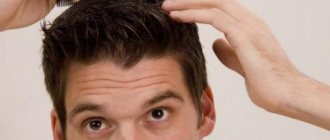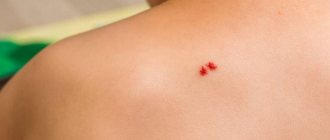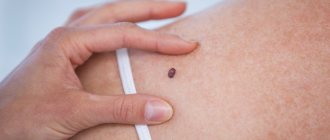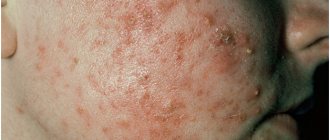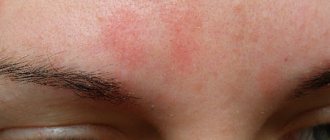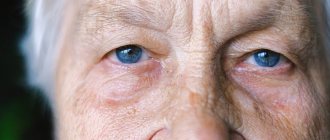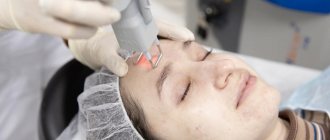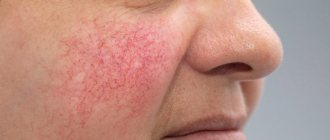Every year, perfectly smooth skin becomes increasingly rare. Small scars or moles are not taken into account. Although they are also capable of delivering considerable psychological discomfort to their owner. But the appearance of pink spots on the skin can also be the cause of an infectious disease, which is important not to miss.
If pink spots appear on the body, then most likely they are a warning about a malfunction in the body, indicating an allergy or infection . Most often, such rashes are regarded as the initial stage of the appearance of a rash. Even if small redness does not cause discomfort, does not flake or itch, it is better to consult a doctor and get the right treatment.
Types of spots on the skin
Experts distinguish three types of pink spots:
- Vascular. Their appearance is associated with the condition of the blood vessels. The color of the spots, which can take on pink, red or lilac shades, depends on the degree of their damage.
- Pigmented. They can be light pink or brownish-pink in color; the appearance of such spots is associated with the loss of melanin in the skin.
- Artificial. These spots occur as a result of an allergic reaction, which can develop after certain cosmetic procedures, the use of medications, vaccinations and body manipulation, such as tattooing, piercing, tattooing, etc.
Pigment
Pigment spots are characterized by too dark or too light a color, they appear against the background of unchanged skin. There are hyperpigmented and hypopigmented spots. The first of them are formed in places of excessive pigmentation; they have a dark color. Representatives of such spots are freckles, chloasma, lentigo, birthmarks, etc. The second of them is characterized by an insufficient amount of pigment. This condition can be congenital or acquired, associated with various diseases: lichen, vitiligo, psoriasis and others.
Vascular
There are several types of vascular spots:
- Hyperemic, or oversaturated with blood. Such spots can be inflammatory or non-inflammatory in nature. The first of them occur when vasodilation occurs due to the inflammatory process. The size of the spots can vary significantly. Non-inflammatory hyperemic spots are most often caused by severe emotional overload.
- Hemorrhagic. They develop with small intradermal hemorrhages that occur due to trauma and mechanical stress, as well as with some severe vascular diseases.
- Telangiectatic. They are also called spider veins. Spots of this type can appear as a result of poor diet, alcohol abuse, smoking, vascular pathologies, and also due to temperature exposure.
Artificial
Stains of artificial origin include various manifestations of an allergic reaction, including those that occur when various dyes are introduced into the skin, for example, when applying a tattoo.
Dark spots
Dark pigmentation is disorders such as melasma or melanosis, blue-gray dispigmentation.
Melanosis is promoted by any long-term and severe chronic disease. This causes the deposition of melanin in the skin. Common pathologies are:
- Endocrine melanosis, which occurs with insufficiency of the adrenal cortex, dysfunction of the gonads, diabetes mellitus, thyrotoxicosis, etc.
- Hepatic melanosis, developing against the background of impaired liver function.
- Cachectic melanosis in tuberculosis.
- Uremic - occurs in chronic renal failure.
Becker's melanosis
Or it is also called Becker's nevus. Often occurs in boys aged 10 to 15 years. Men and women are rarely affected by them.
A nevus looks like a yellow or dark brown spot of irregular shape with growing hair. Most often it appears on the shoulders, forearms, chest, and back. Can grow up to a diameter of 20 cm.
The reasons for the appearance of nevus are still not clear. There are suggestions that this may be due to a hereditary predisposition to this type of pigmentation or the body’s reaction to ultraviolet radiation.
Dubreuil's melanosis
It appears as a flat, dark-colored spot, possibly slightly raised above the skin. The size on average reaches 5 cm, but after a few years it grows to 10 cm.
The color varies from light brown to dark and sometimes black. This melanosis is considered a precancerous condition. Often accompanied by papillomas and nodular elements.
The damaged areas are dense, with peeling and erosion. The skin around such a formation reacts with the appearance of redness, freckles, and foci of keratosis, which are indicators of the degeneration of melanosis into melanoma (a malignant tumor).
The causes of Dubreuil's melanosis are:
- age;
- abuse of ultraviolet radiation;
- skin sensitivity to light;
- skin injury;
- overdrying of the skin.
Urticaria pigmentosa
A common disease in children. Hives look like red-pink spots that develop into blisters with liquid. The spots are very itchy.
And after opening the blisters, brown-brown marks remain on the skin. Urticaria occurs more often in children. As a rule, the spots disappear during puberty.
If an adult falls ill with urticaria, the situation is complicated by the appearance of systemic mastocytosis, which often leads to disability or death.
The causes of urticaria pigmentosa are still being studied. Presumably, provoking factors are:
- immune system response;
- stress;
- climate change;
- inflammation and infections;
- genetic predisposition.
Coffee-colored spots - Nevus Spilus
This hyperpigmentation occurs in the form of single spots with an even color and clear boundaries on any area of the skin. Pigmentation can appear from birth.
The spots are never hairy and have dark or black dots on the surface. Presumably the reason for the formation is heredity.
Freckles
These are small dark spots on the face or body. Pigmentation becomes more noticeable in the warm season with solar activity. Freckles may disappear as you age.
It is more common in people with light hair, eyes, and skin. Scientists have proven the dependence of the appearance of freckles on hereditary predisposition.
Recklinghausen's disease
The spots look like clusters of freckles, appear in unusual places and take on a café-au-lait hue.
Such formations can appear from birth or in childhood. The color varies, but brown shades predominate.
Rarely does the spot acquire a gray-blue color. Formations appear on the surface of the arms, legs or torso in an amount of at least 5 pieces. The patient is affected by nerofibroma, which subsequently spreads to other organs - nervous tissue, adrenal glands, etc.
Such spots degenerate into cancer from 3 to 15% of cases. The nervous system and musculoskeletal system suffer. Epilepsy, depression, fatigue occurs, vertebrae are destroyed, cysts appear, etc.
The mutating gene of chromosome 17, which is inherited, is to blame for the appearance of this disease.
Nevus Ota and Ito
Ota manifests itself as a single spot of black-bluish or dark blue color in the eye area, upper jaw or cheek. Sometimes you can find merging spots. Even less commonly, pigmentation can be bilateral.
The disease sometimes spreads to the sclera and nasopharyngeal mucosa. The spots appear from birth and do not go away on their own.
Scientists have not yet determined the cause of nevus of Ota. Often this disease affects people of the Mongoloid race and very rarely Europeans and the Negroid race.
Nevus of Ito is similar to nevus of Ota. The only difference is in its location - neck, chest and shoulder blades.
Common Causes of Pink Spots
The main common reasons for the appearance of pink spots on the skin are the following:
- Allergy. Cosmetics and household chemicals, food, medications, etc. can act as allergens. Subsequently, blisters form at the site of the spots. An allergy rash is accompanied by severe itching.
- Poor nutrition. Abuse of fast food, fried foods, smoked meats, processed foods, sweets, and confectionery products can lead to dermatological problems.
- Drinking alcoholic beverages. Red and pink spots often appear on the skin after drinking alcohol. This is due to the expansion of blood vessels and the deterioration of their walls.
- Disturbances in the normal functioning of internal organs. Often, skin problems are only one of the manifestations of more serious disorders in the body. Many diseases can lead to the appearance of rashes and spots on the body, for example, vegetative-vascular dystonia, liver disease and others.
- Infections. The cause of spots on the skin can be infectious diseases: lichen, meningitis, scarlet fever, syphilis, chickenpox and others.
- Hormonal imbalances. Spots on the skin can appear during periods of hormonal changes in the body (during pregnancy, adolescence, menopause) or during endocrine pathologies.
- Stress and nervous overload. They can also cause blemishes on the skin. Most often, they are localized in the neck, face, chest and arms.
- Dermatological pathologies. These include: photodermatosis, seborrhea, psoriasis, eczema and others.
Other spots
If unusual formations appear on the skin, a person should first seek advice from a dermatologist.
Only a specialist can determine the disease by appearance, size, color, shape and other indicators and prescribe appropriate treatment.
If the case requires confirmation of the diagnosis, you will need to take scrapings from the damaged area and consult an oncologist or venereologist.
Depending on the problem, different treatments may be prescribed:
- the primary disease and the resulting spots are its symptoms;
- allergen, if allergy appears with supportive therapy;
- lichen spots, which require an integrated approach with the use of oral and external remedies, the use of hygiene products and strengthening the immune system;
- pigmented areas lightened with special means, peelings, mesotherapy, cryo procedures, laser.
Determining causes by symptoms
Pink spot itches
The reasons for the appearance of pink spots, accompanied by itching and flaking, are very diverse. The most common of these include the following diseases:
- Eczema. This pathology develops due to hormonal imbalances, frequent stress, severe allergies or poor skin hygiene. The predisposition to the occurrence of this disease is hereditary. The location of the skin rash may vary. It is currently impossible to completely cure eczema; you can only temporarily relieve its symptoms.
- Lichen. Its main symptom is pink spots that are very itchy and flaky. The rash primarily affects the skin of the thighs, pelvis and back. When touching the inflamed areas of the skin, pain and discomfort are felt.
- Psoriasis. The disease is not contagious; it is believed that it appears under the influence of strong emotions, overwork, nervous shock and stress. The rash appears as pink spots, against which nodules may form. They are localized mainly on the abdomen, the outer part of the forearms and hands, and the back.
- Dermatitis of various etiologies: atopic, congestive, perioral, diaper, etc. The development of such diseases can be triggered by bad habits, severe stress, contact with allergens and other unfavorable factors.
- Diathesis. In children, itchy and flaky spots most often indicate diathesis. To get rid of them, you need to exclude from the baby’s diet the product that caused such a reaction.
- Allergy. This disease is manifested by the formation of a rash on the skin in the form of pink and red spots, against which vesicles then form. The rash is accompanied by severe itching.
Pink spots peel off without itching
With some diseases and problems in the body, pink flaky spots of various sizes may appear on the skin, which are not accompanied by itching. You also need to pay attention to such a rash, and it is better to visit a dermatologist to determine the nature of the rash and the need for its treatment.
Pink spots on the skin that do not itch can be regular moles or nevi. They often rise above the skin. If they do not cause discomfort or interfere, they should not be touched. In cases of sudden darkening of such a spot, its inflammation or bleeding, you should immediately seek medical help.
The causes of pink spots on the skin without itching can also be:
- stress. There is no need to take special measures to treat such a rash; it will disappear on its own after the person calms down;
- specific forms of allergies. Typically, allergic rashes are accompanied by severe burning and itching. However, in some cases no such symptoms are observed;
- pathologies of the digestive tract;
- errors in nutrition: overeating, eating large quantities of smoked, fatty and spicy foods;
- infectious diseases. Especially often, spots on the skin of the hands and feet appear during their treatment if antibacterial drugs are used;
- diseases of the cardiovascular system;
- weakened immunity;
- insufficient skin hygiene, etc.
Stains that do not cause any discomfort
Diseases that can cause spots on the skin without itching and peeling include: systemic lupus erythematosus and vegetative-vascular dystonia. The first of these is an autoimmune disease, the rash being only one of its manifestations. It can affect the bridge of the nose and cheeks.
Vegetative-vascular dystonia, or VSD for short, negatively affects the functioning of blood vessels and internal organs. With stress and emotional experiences against the background of VSD, bright pink spots may appear on the hands, face and chest. The reason for this is local dilation of small blood vessels in the skin, caused by disturbances in the normal tone of the nerves. As the person calms down, the spots disappear from the skin.
In addition to these diseases, pink rashes on the body, which do not cause inconvenience, can occur with an unbalanced diet, a lack or excess of certain vitamins, poor skin care, and various pathologies of internal organs.
What types of spots are there?
What is a stain? This is a part of the skin that differs in color. Tactilely, it is either smooth or has a small protrusion above the surface and is rough.
Spots can be divided into several groups:
- vascular - acquire a pink, red, purple color;
- pigment - brown and white colors;
- artificial - tattoos and permanent;
- lichen, etc.
Vascular spots
- Hyperemic caused by:
- inflammation in the body when blood vessels dilate. The spots can be in the form of roseola up to two cm or erythema - more than 2 cm;
- non-inflammatory etiology - often called spots of anger or shame. Caused by hyperemic vascular disorders during an emotional reaction. Places of occurrence: face, neck, chest.
- Hemorrhagic. Such spots appear due to mechanical stress, or are a sign of a disease affecting the vascular system.
A bruise or contusion goes away on its own within 10-14 days, and during this time the color changes from red to yellow, green.
Other manifestations need to be taken more seriously, since they generally require treatment.
3.Telangiectatic. The reason is telangiectasia or, more simply, asterisks that appear due to dilation of blood vessels.
Such formations are divided into 2 groups - congenital and acquired. The causes of the occurrence are different - from poor nutrition, bad habits, to serious problems with the cardiovascular system and gastrointestinal tract.
Pigmentation
The spots appear as dark or bright white patches of skin.
Determining causes by appearance
White-pink spot on the skin
The cause of white-pink spots can be fungal infections of the skin. In this case, the rashes do not itch or hurt. Vitiligo manifests itself in a similar way; with this disease, spots can grow and become huge, for example, covering the entire forearm. Other causes of such rashes are: psoriasis, allergic reactions, infectious skin lesions.
Rose red
Red-pink spots may indicate such disorders and diseases as: allergies, dermatitis, infectious pathologies (rubella, measles, herpes and others), diseases of the genital area, disorders of the digestive system, lack of vitamins, weakened immunity and others.
If the appearance of a pink-red rash occurs with severe itching and burning in the skin, sore throat, and fever, then you should definitely consult a dermatologist.
Round pink spots
Clear round spots of various colors can be moles or nevi. They can be located on open areas of the skin or hidden under the hair. Such spots should not cause concern. Round, light pink rashes can occur with vitiligo. This disease is not dangerous to humans, but if you suspect it, you should visit a doctor to confirm the diagnosis. Pink spots can also be a symptom of dermatological diseases, such as lichen.
Rough or convex
Pink spots, convex or rough, can form on the skin due to various pathologies, mainly infectious, fungal or allergic in nature. Such diseases include: contact dermatitis, athlete's foot, microsporia, ringworm and other types, eczema, psoriasis and other pathologies. The location of such spots exclusively in the area of the scalp and face is characteristic of seborrheic dermatitis.
How do you know if pityriasis rosea is going away?
After a course of therapy, the spots disappear without scarring. In place of the plaques, clean skin remains, possibly lighter. Over time, the color evens out. In patients with atypical lichen, ulcers may form.
Complications during self-medication:
- infection of affected areas with bacteria;
- suppuration, ulcers;
- hyperpigmentation.
Hyperpigmentation
To prevent this development of the disease, at the first symptoms of pityriasis rosea, it is recommended to make an appointment with a dermatologist.
Treatment of manifestations
Treatment of the rash should begin by consulting a doctor and identifying the causes that caused it. This requires an examination, including blood and urine tests, examination, skin scraping, ultrasound of internal organs and consultations with specialists.
After making a diagnosis, the doctor prescribes a course of treatment. It may include: the use of local ointments and creams, antihistamines, sedatives, taking vitamins, cosmetic procedures, etc.
Antiallergic ointments and creams
Of the antiallergic ointments and creams, the most famous are the following:
- Protopic. It helps cope with most allergic rashes.
- Skin Cap. It contains zinc. The ointment is used to treat the skin according to individual indications.
- Zinc ointment is the most accessible remedy for allergic rashes accompanied by itching.
- Fenistil. It is used to eliminate any skin manifestations of allergies, as well as insect bites.
Antihistamines
Antihistamines used for skin rashes include:
- Zyrtec. Available in the form of drops, it rarely causes side effects.
- Telfast. Release form: tablets, which are recommended to be taken once a day for allergic skin pathologies.
- Fexofenadine. These tablets are suitable for treating various types of allergic rashes.
- Allegra. Medicine of the latest generation.
Incorrect treatment of pityriasis rosea
- Lubrication with iodine, brilliant green
. These antiseptic drugs do not provide results in the treatment of pink dandruff. The virus is located deep in the skin, so iodine or brilliant green cannot affect it, but at the same time they dry out the skin, causing a burn. - Celandine
. The poisonous sap of the plant leads to damage and inflammation of the skin. Celandine causes burns, increasing the risk of complications. - Zinc ointment
. Causes skin tightness. - Salicylic acid, alcohol
. Ineffective against the virus. Dries and irritates the skin, increasing peeling. Leads to hyperpigmentation. - Vinegar
. Dries out the skin and increases peeling.
To treat Gibert's disease, you can only use products prescribed by a dermatologist.
Possible complications
In most cases, skin problems accompanied by a rash are cured without visible consequences or harm to health. Of particular danger are pathologies of internal organs that occur with the formation of pink spots on the skin. Possible complications of such diseases include:
- heart failure;
- heart attack;
- liver dysfunction;
- metabolic disorder;
- stroke;
- disruptions in the functioning of the nervous system;
- renal failure and so on.
Pink dots on hands
Pink blisters and spots on the hands are accompanied by aggressive itching, dry skin and signal the development of dangerous conditions:
- demodicosis;
- seborrhea;
- rubella;
- syphilis;
- scabies.
Under no circumstances should you self-medicate, especially if skin reactions are accompanied by a deterioration in the general condition or a change in the patient’s emotional mood. These diseases require a serious approach to complex treatment.
Rashes on the hands may indicate an allergic reaction to detergents, powders, cosmetics, or synthetic clothing. Ultraviolet radiation from the sun can also cause light-colored rashes. In this case, it is necessary to use sunscreens with a high level of protection and wear clothes made of thin natural fabrics.
Prevention
The basis for preventing the appearance of pink spots of non-infectious origin is a proper balanced diet. In your diet you need to reduce the share of foods such as chocolate, honey, sweets, eggs, citrus fruits, soda and fast food. It is important to maintain caloric intake and the ratio of proteins, fats and carbohydrates. You should definitely pay attention to adequate intake of vitamins, especially during the cold season.
It is advisable to avoid stressful situations and nervous overload. You can learn calming techniques, walk more and relax. Set aside enough time for proper sleep. If you are prone to stains, you should give up strong tea and coffee, replacing them with herbal teas and fruit drinks.

